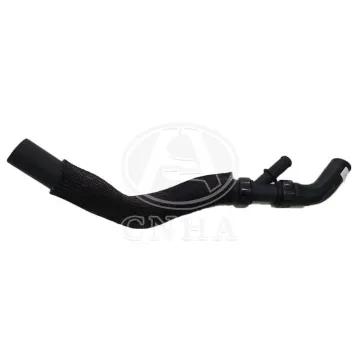How To Tell If Your Hoses Need Replacing?
Sep. 30, 2021
What Is Radiator hoses?
The upper radiator hose and lower radiator hose are made of reinforced synthetic rubber to withstand heat, vibration, pressure and cooling system chemicals.
Purpose
The radiator hoses provide a flexible connection for the flow of coolant between the engine and the radiator.
Maintenance tips/recommendations
Radiator hoses should be inspected at least twice a year, in both spring and autumn. The hose clamp connections should also be checked to ensure they are secure and leak-free. Although the condition of the hoses has traditionally been determined from the outside of the hose, studies have shown that hoses do begin to break down from the inside out. This process, known as electrochemical degradation (ECD), produces small cracks in the hose wall.
These tiny cracks extend from the inside of the hose to the outside, near one or both ends of the hose. Coolant then penetrates these cracks and erodes the hose reinforcement. Eventually the situation deteriorates to a pinhole leak or a burst hose. If you want to know more information about the best radiator hose wholesale, welcome to contact us today or request a quote.
Ford Heater Hose
Coolant hoses should be replaced at least every four years, or more frequently as required. It is also a good idea to replace any hoses that are connected to the part of the cooling system being replaced. For example, it is a good idea to replace both radiator hoses at the same time when replacing the radiator.
If you decide to service the cooling system yourself, be extremely careful: opening a hot radiator or coolant reservoir/overflow tank can cause severe burns. Before starting any heating/cooling system maintenance or repairs, make sure that both the engine and the cooling system are cooled down. Your vehicle may be equipped with an exhaust for the cooling system.
Unless the cooling system is properly vented, air may be trapped in the system and cause temperature instability or, in extreme cases, damage to the engine or cooling system. If you are unsure of any aspect of the cooling system service, do not take any chances. Have your car checked by a professional service technician.
How to tell if your hoses need replacing?
There are a few key things to look for, including kinks, hard or brittle textures, surface cracks and bumps or bubbles.
Inspect the hose and note any kinks or obvious signs of wear. Squeeze the radiator hoses (only when cool) and see how they feel. If the hoses are soft and pliable, there is no need to replace them. However, if the hoses feel stiff, cracked or brittle, they need to be replaced.
When squeezing the hose, check the surface for small cracks. These can easily become major problems as they are the main problem with "blown" hoses.
You can also check where the hose is connected to the inlet or outlet pipe. Look for bumps or bubbles around the hose clamp as this is a sign of impending failure.
Hoses can last a long time, but replacing them before they fail is always a better option as it will prevent you from being stranded on the side of the road waiting for help to arrive.







